Information from the Products
The following products provide additional information about anticyclones: water vapour 6.2 µm, enhanced infrared 10.8 µm, high resolution visible, day natural colour RGB, and satellite-derived Global Instability Index (GII K-Index). View the products in the tabs, then answer the questions below.
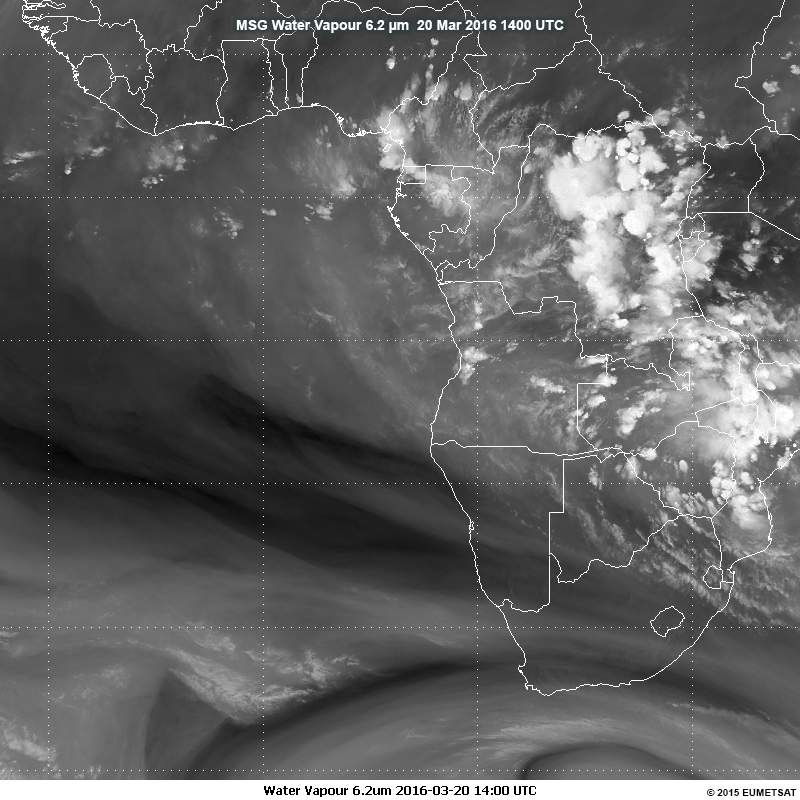
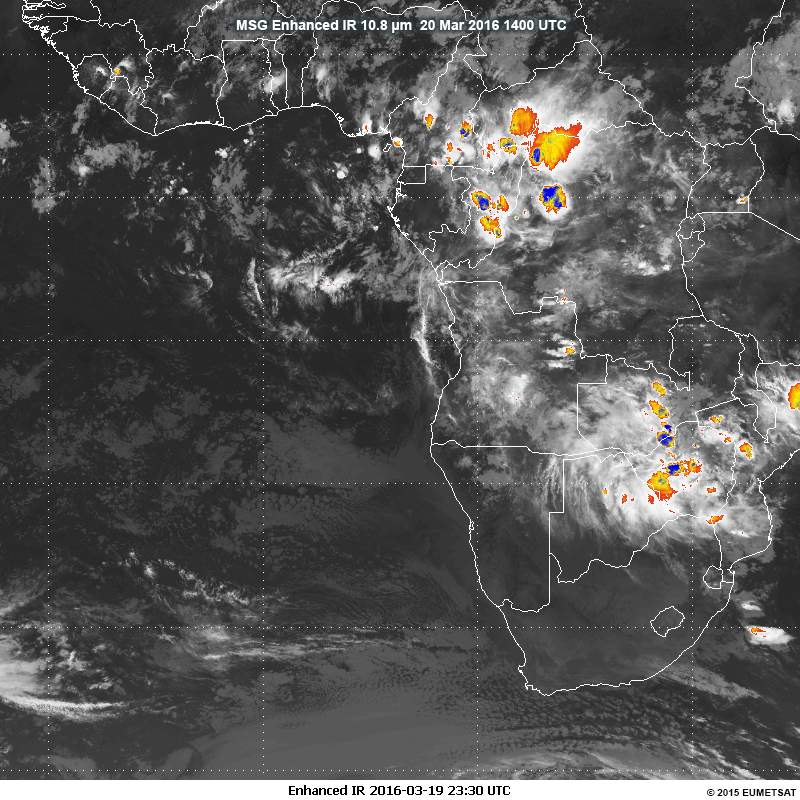
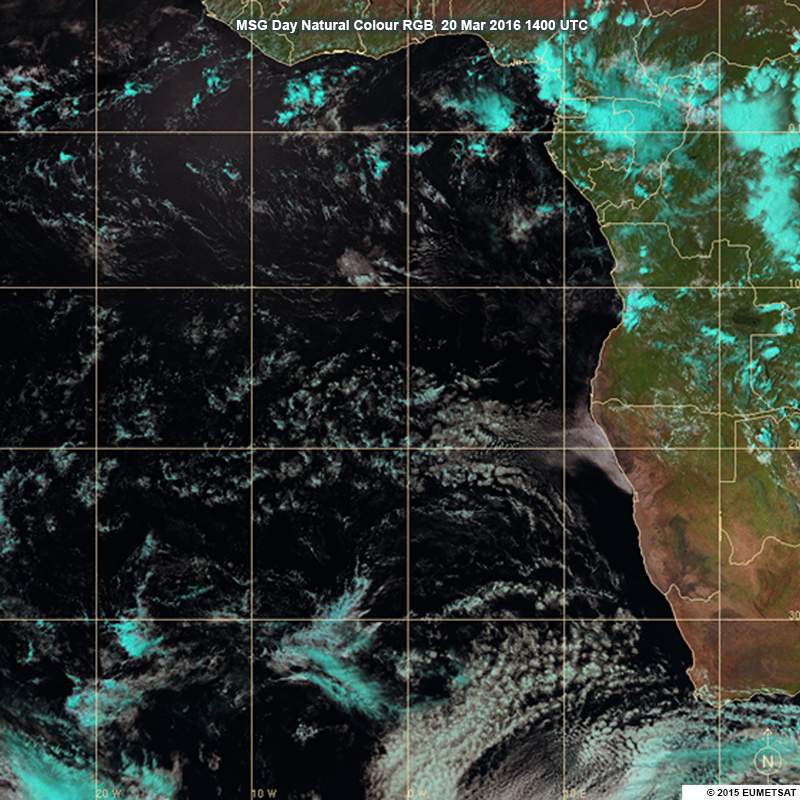
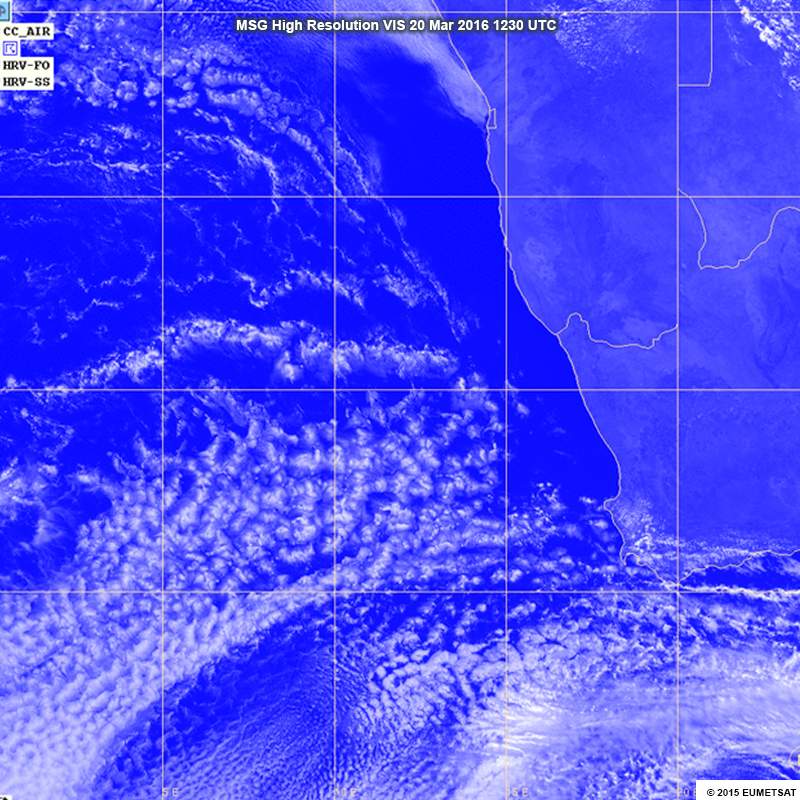
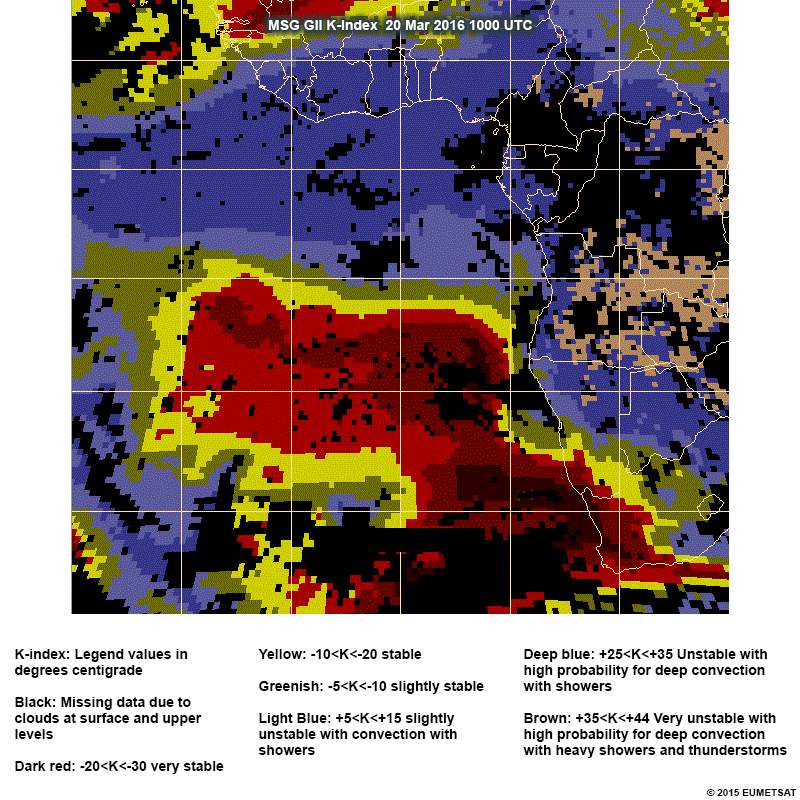
Question 1
Which statement is true of the anticyclone in the WV 6.2 µm imagery?
The correct answer is A.
Since the WV 6.2 µm channel does not provide information from the lower troposphere, even in very dry conditions, it can not be used to monitor lower tropospheric circulations.
Question 2
Which statement is true of the anticyclone in the enhanced IR 10.8 µm imagery?
The correct answer is B.
No deep convection is possible when a region is under the influence of an anticyclone. But the anticyclonic region is not completely clear. The presence of persistent low level clouds (stratus or stratocumulus) is an indication of a temperature inversion arising from the stable atmosphere.
Question 3
Which statement is true of the anticyclone in the day natural colour RGB?
The correct answer is B.
The day natural colour RGB shows both water and ice phase clouds. We see some broken, low-level water clouds (stratocumulus over the ocean and fog off coast of Namibia) in light pink; some medium-level clouds in pink and with light cyan patches; and only few patches of high-level, cold, thin cirrus clouds made up of relatively large ice crystals in deeper cyan. It should be noted that for cloud phase detection the most appropriate product is Day Microphysics RGB
Question 4
Which type of cloudiness is dominant in the high resolution visible image?
The correct answer is B.
The HRV imagery lets us see the detailed structure of the cloudiness. The cloud scene over the anticyclone in the southern Atlantic reveals a number of cloud features but cellular-type clouds of different sizes are dominant. The largest cloud sheet shows closed cell convection type of clouds, which are typically observed within marine anticyclones. Stratiform clouds are not dominant although there is some stratus/fog off the Namibian coast.
Question 5
What does the GII K-Index indicate about the stability of the anticyclone?
The correct answer is A.
The anticyclone is located within a region of negative values (dark red to greenish colours) in the K-Index, indicating that the airmass is stable.